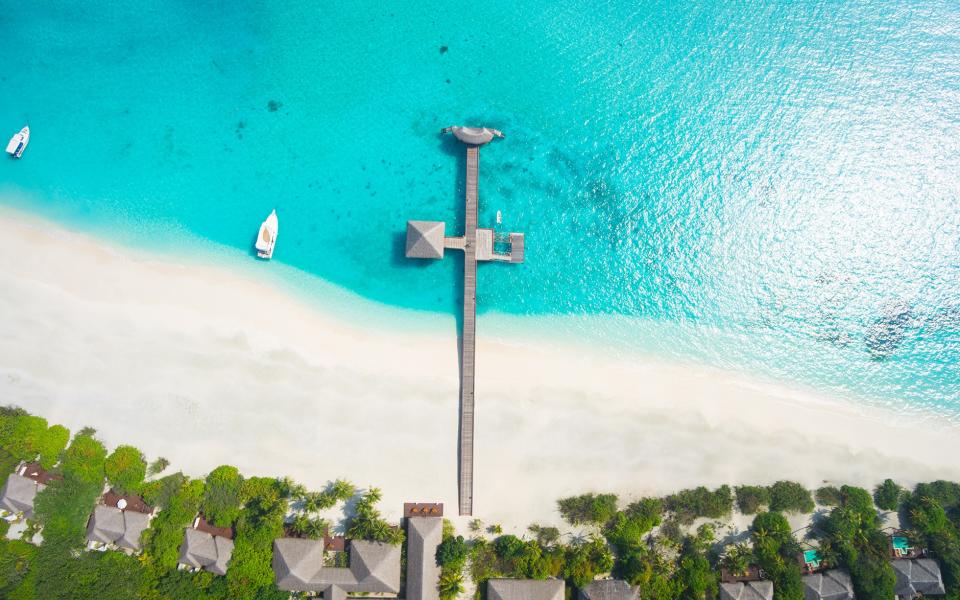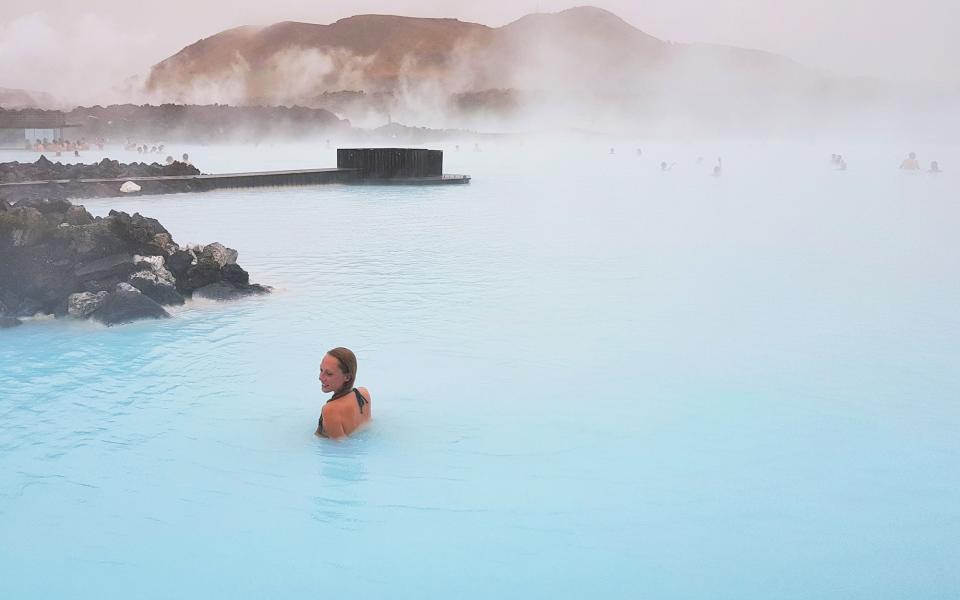The countries most reliant on tourists, and how they are coping post-lockdown

For the vast majority of human history, tourism didn’t exist. Only in the last half a century or so, since the rise of the middle class and since aviation has joined almost every dot on the map across the planet, has leisure travel become the industry giant it is today.
More than 330 million jobs worldwide depend on it; contributing to about ten per cent of global GDP. In some countries, it is much more; the Carribean being the starkest example.
In the island nation of Antigua & Barbuda, 91 per cent of employment was in the travel and tourism industry last year – the highest share in the world, according to the World Travel & Tourism Council (WTTC).
Beyond the Caribbean, the Chinese casino enclave of Macau is next, with 66 per cent of jobs relying on tourism; followed by the Maldives (60 per cent) and the Seychelles (40 per cent).
In Europe, Croatia - which has seen a huge boom in tourism over the past decade - takes the top spot, with foreign visitors contributing to more than 20 per cent of its GDP. That’s followed by Iceland, Greece, Malta and Portugal.
It is hard, therefore, to understate the impact of the coronavirus pandemic on these economies, and why these countries have been prepared to open their borders as soon as possible to countries with far higher infection risks than their own.

Let’s examine how the countries most dependent on holidaymakers are coping and what the future might hold.
The Caribbean
Last year, more than 31 million people visited, more than half of them from the US, where borders remain closed. The islands of the Caribbean dominate the WTTC’s list of countries with the highest share of jobs in tourism; Antigua & Barbuda, (91 per cent) followed by Aruba (84 per cent), St Lucia (78 per cent) and the US Virgin Islands (69 per cent).
"Zero tourists means zero income," local excursion operator in Aruba, Glen Hector, told the BBC.
As if it couldn’t get much worse, the idyllic region is currently bracing itself for the double whammy of a bumper hurricane season and ongoing efforts to keep coronavirus under control.
A busier than normal Atlantic Ocean hurricane season has been predicted for 2020, and the coronavirus could "spread easily in crowded emergency shelters" where social distancing would be difficult, said Unicef, the United Nations' children's agency.
Six of the islands currently remain closed to tourists, and 22 are open. See which ones you can visit below:
The Maldives
The tourism industry accounts for 60 per cent of the country’s workforce and nearly 30 per cent of GDP in the Maldives, so its reopening has been a priority.
Among a population of 540,000, the country, comprised of 1,192 coral islands, has recorded 5,157 cases of the virus and 19 deaths, as of August 10.
Abdulla Shahid, the archipelago’s minister for foreign affairs, has spoken of “a sense of relief and excitement as the country welcomes back tourists”. It reopened to international visitors on July 15. Emirates, Qatar and Etihad are among the airlines to be offering a handful of flights to the Maldives again, with connections in the Middle East.
Britons are not required to quarantine on arrival or present a negative Covid-19 test, however, the Maldives is included in the Foreign Office (FCO) advisory against all but essential travel, making it trickier to secure travel insurance for a trip there.
Plus, the country has yet to be included on the UK Government’s travel corridors list, which means those travelling from the Maldives to the UK are required to self-isolate for 14 days.
Last month, Thoyyib Mohamed, managing director of Maldives Marketing and PR Corporation, told Telegraph Travel: “With the Maldives High Commission in the United Kingdom and the government of Maldives, discussions are underway to ease the travel restrictions for travellers from the UK. We hope that the Maldives will soon meet the conditions required for an easing of [the UK's] travel and border measures."
Tour operators have urged for the inclusion of this Indian Ocean nation, which lends itself to socially distanced holidays. Of more than 150 resorts in the Maldives, at least 40 reopened in the latter half of July. More will follow suit in this month; and around 50 others will resume business in September and October, which is high season.

Croatia
Nowhere in Europe is more reliant on tourism than Croatia, and the country reported a whopping 96 per cent drop in overseas visitors in May this year compared to last. However, the head of the tourist association has stated that arrivals in August are so far up to nearly a half of what they were in 2019, according to Bloomberg.
“There’s nothing that can compensate for the income from tourism for Croatia in the near future. Nothing,” said Zeljko Lovrincevic, a researcher at the Economic Institute in Zagreb. “There have been warnings for many years on how this is a fragile industry, and now the devil’s at the door.”
However, Croatia has been praised for its handling of the coronavirus. At present, there are only 579 active cases and 160 deaths in total. And tourism has been showing promising signs of bouncing back. There are currently some 760,000 holidaymakers in the popular coastal city of Split, where our expert Jane Foster has been writing from.
“Walking along the seafront promenade in Split on Friday night,” she writes, “it looks like a regular summer – crowds of sun-tanned tourists, a babble of languages. Restaurants are heaving, music is blaring, bars are serving cocktails below a moonlit sky.”
Željan Kutlača, at Split's Meštrović Gallery, set in gardens above the sea tells her. "We're seeing fewer visitors, maybe 20 to 40 per day. Most are from Germany, Poland and the Czech Republic, in past years they'd be from the US, UK and France. They're all polite, wear masks and follow the rules. The gallery isn't hosting any commercial events this year – usually we have weddings, gala dinners and VIP receptions. This means our revenue has dropped, but we'll survive".
Iceland
In the past two decades, tourism in Iceland has escalated more rapidly than almost anywhere else in the world; from just 100,000 or so per year in 1986 to well over two million in 2019 – enormous, for a country of just 350,000 residents.
Those numbers dwindled to nothing when the country locked down in March amid the pandemic and since reopening, the pre-existing debate over the problems of overtourism now centres around the best ways to build tourism up from scratch again.
Domestic holidays have proved popular of late. In addition to assistance from the government, Icelanders have all also received travel vouchers worth 5000 ISK (€32.36), which can be used at restaurants, pools, campsites, museums and hotels.
Iceland opened up to EU visitors on June 15. Our writer Paul Sullivan, who visited shortly thereafter, found the industry to be recovering slowly, writing: “In normal times, the Blue Lagoon pulls in around a million visitors a year, but today just a couple of hundred people are wading around with the venue’s trademark white silica smeared on their faces. And almost all the voices I hear are Icelandic.”
Local director Kjartan Ragnarsson tells Sullivan: “What the future holds is difficult to predict. I think it will take at least two years to go back to normal and maybe it never will. It will probably be more expensive to travel which means fewer tourists, but that may not be a bad thing. We are now experiencing a more relaxed atmosphere and are hopeful that we will survive."

Greece
Greece has fared relatively well throughout the pandemic, with one of the lowest infection rates in Europe. Currently, it has registered 5,942 total cases and 214 deaths. It is also a country which relies heavily on tourism, but the view from the ground on just how much they’re missing us has been mixed.
Many locals have been enjoying the break from the usual inundation of ‘influencers’ and cruise ship passengers. Markos Kafouros, President of Santo Wines in Santorini told our reporter Adrian Mourby: “I believe that the pause of cruise ships also gave the island the opportunity to breathe. I think that over the last five years, many visitors to Santorini were not completely satisfied because of all the crowds and traffic. From now on tourism must be more sustainably organised.”
Konstantinos Makkos, owner of Folegandros Apartments on another island told Telegraph Travel’s Mark Stratton that he estimates a 60 per cent downturn in summer business. “August is looking okay but nothing much in September. The weather’s good then, why aren’t [Britons] booking ahead?”
Many are. In an exclusive interview with us today, the CEO of Wizz Air confirmed that the airline has switched its focus from Spain chiefly to the Greek islands. Its first direct service to Santorini took off this week and the flight was close to full. Bookings to Greece have been “extremely strong,” Jones said.
Cruises are also back in business now, though not yet for Britons. Six major ports – Piraeus in Athens, Rhodos, Iraklio, Volos, Corfu and Katakolo – started welcoming vessels from Europe on August 1, more than four months after all ships were banned.
This said, Greece's prime minister warned of new restrictions last week if a recent rise in daily cases did not abate, and this week it announced that arrivals from a clutch of countries, including the Netherlands, would need to show evidence of a negative Covid test on arrival.
Read more: Travel insurance and coronavirus: Everything you need to know about 'Covid cover'

